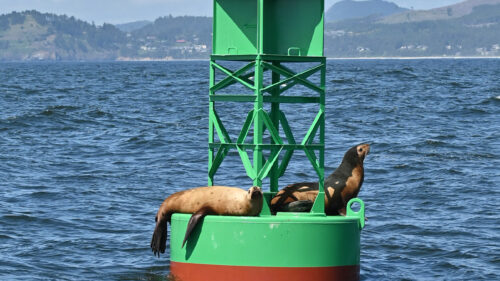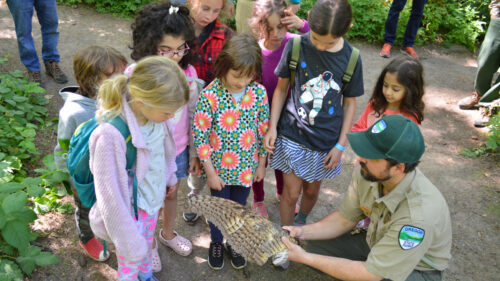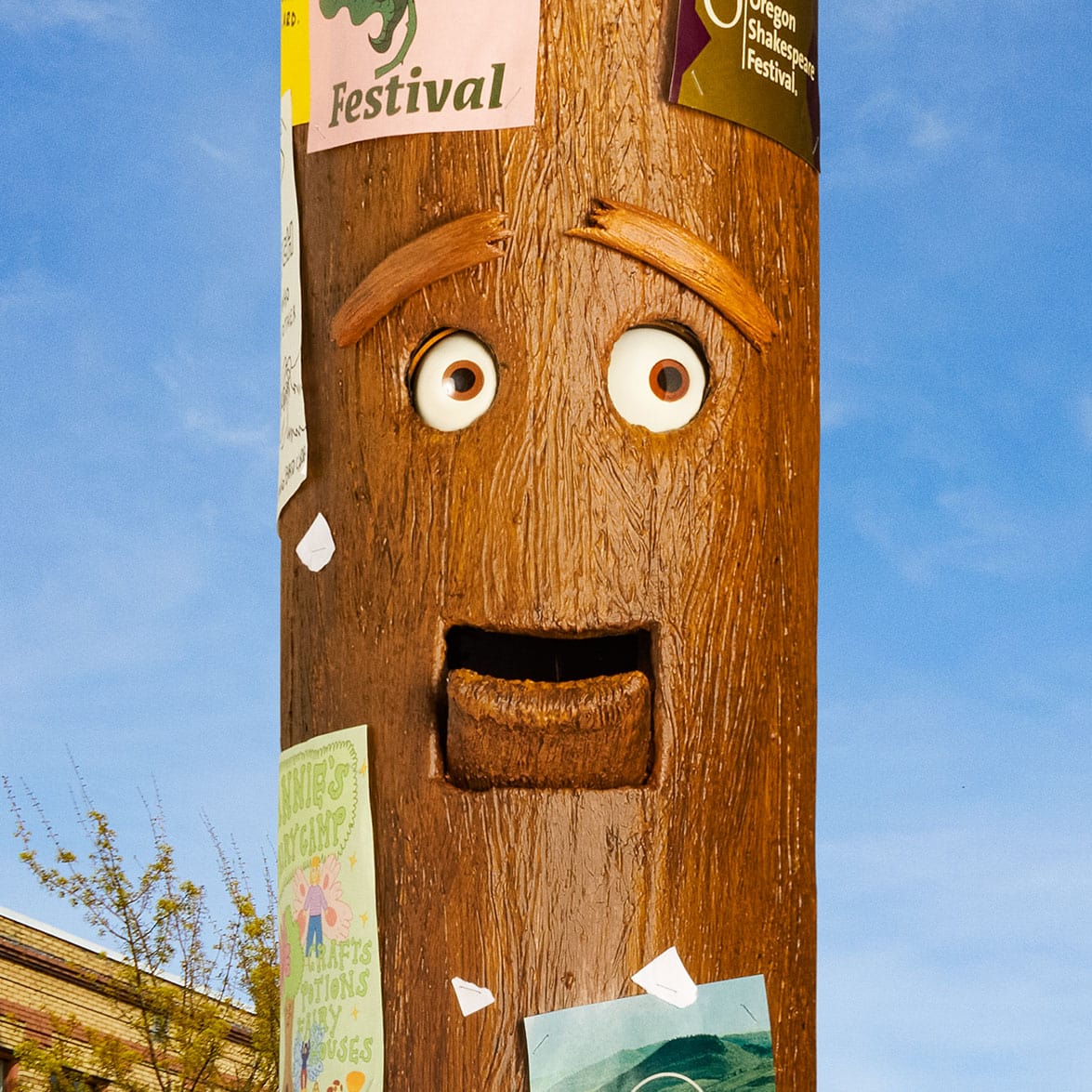Come fall, many animals are on the move, headed for milder weather, breeding grounds and better food sources. The air fills with flocks of birds who rest in wetlands on their route to warmer climates; whales make their way south, flashing tails as they dive deep; and herds of elk cross misty meadows. Visitors to Oregon have multiple ways to take in a gorgeous fall day and spot wildlife that are often shy and stealthy the rest of the year. Here are a few species to look for as the seasons change.
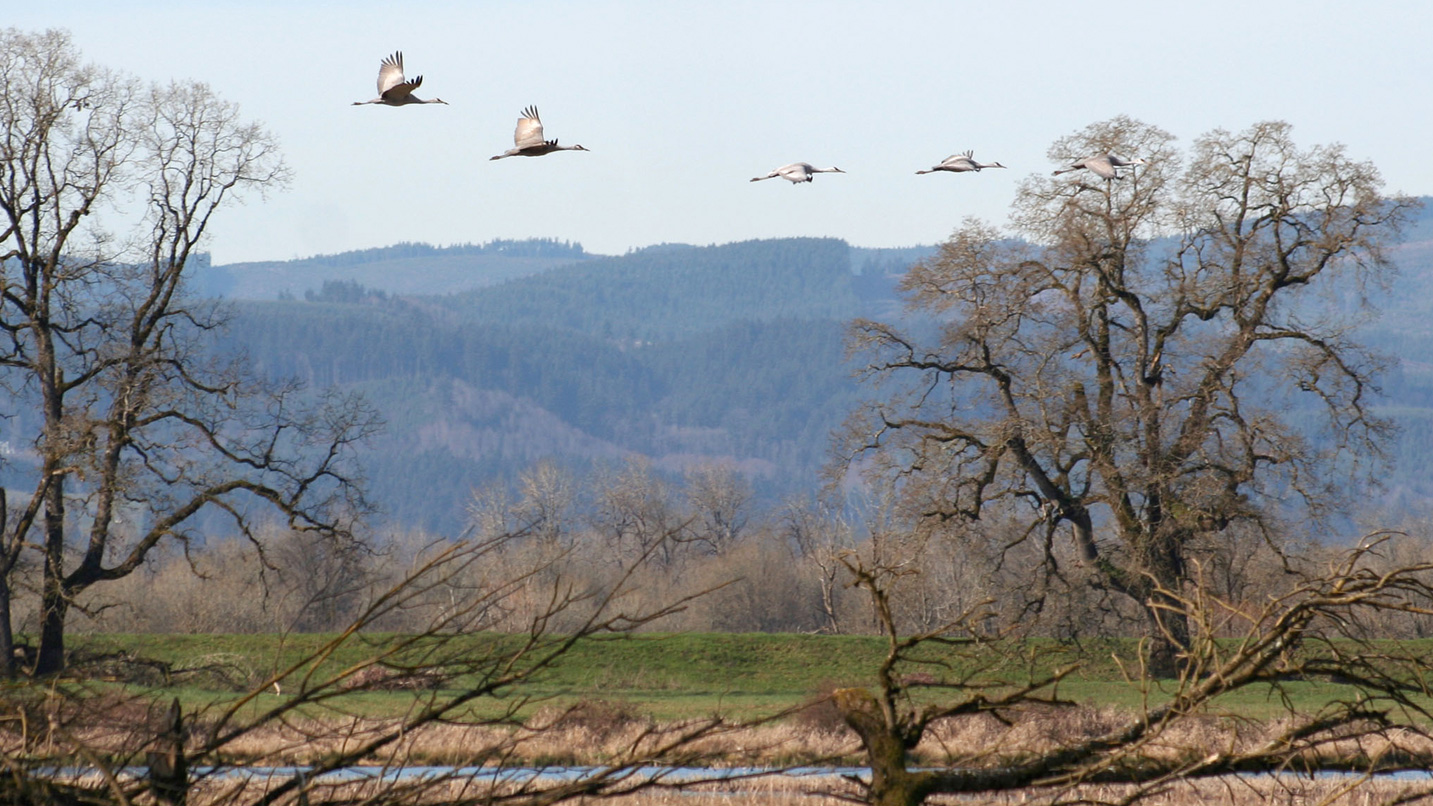
Scan the Skies for Graceful Birds
Oregon’s variety of habitats attracts hundreds of bird species winging their way south in autumn. The wet meadows and fallow farm fields of Sauvie Island just northwest of Portland have become a favorite for greater sandhill cranes, handsome birds that stand 4 feet tall with a distinct scarlet cap and a rattling cry. They arrive by the hundreds in September and October from as far north as Alaska. Some are fueling up for a longer southern journey; many spend the winter at the Sauvie Island Wildlife Area in the northern part of the island. Try for September or spot them as you stroll down gravel Rentenaar Road in the south if you arrive after the trails in the north are closed for nesting season from Oct. 1 to Apr. 30. This birding guide provides more information.
Situated on the Pacific Flyway, the wetlands along the Klamath Basin Birding Trail provide vital resting grounds for more than a million ducks, geese, egrets, pelicans and other shorebirds September through November. In January and February, hundreds of bald eagles congregate there to feed in open waters — and in places where they overwinter like The Dalles Dam in the Columbia River Gorge.
Watch for Marine Mammals in the Pacific
Migrating 12,000 miles from the Bering Sea to Baja California, Mexico, gray whales get the prize for the longest mammal migration. Dozens of whales per hour may travel southward along the Oregon Coast in peak weeks, typically mid-December to mid-January.
That’s when Oregon State Parks hosts its volunteer-led interpretive program at prime viewing sites where the whales tend to hug the shore, such as Cape Meares State Scenic Viewpoint, the Whale Watching Center in Depoe Bay and Face Rock State Scenic Viewpoint near Bandon. Armed with binoculars and helpful tips, guides help visitors spot passing pods. Look for whales blowing great plumes of water, breaching the ocean’s surface and diving deep with a dramatic splash of their fluked tails.
As whales head south for warmer waters, California sea lions do a sort of reverse migration: Males travel north to Oregon from California in early autumn, then return south for breeding in the spring. They’re the boisterous barkers you can see and hear at Shell Island off Cape Arago State Park, throughout the Port of Newport in Yaquina Bay and around Cascade Head near Lincoln City.
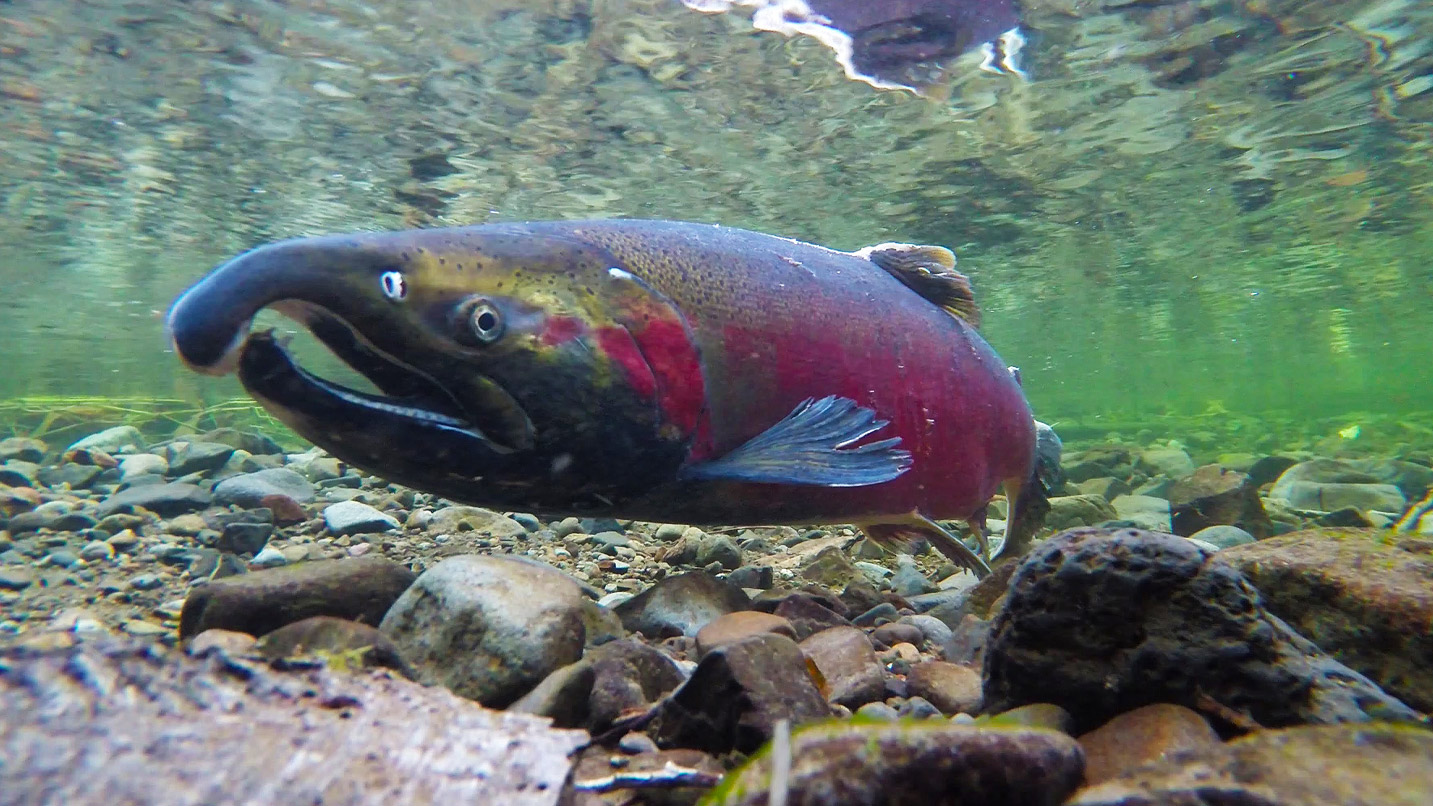
Look a Salmon in the Eye and Help a Frog Cross the Road
Long revered in the Pacific Northwest, salmon are homebodies, returning to their river of birth to lay and fertilize eggs. In the Columbia River Gorge, the migration begins in September and may last until January. Look for gravel beds near the mouths of spawning streams like Herman Creek and Eagle Creek near Cascade Locks, busy with wriggling coho and chinook. Avoid wading in the water, which can spook the fish and disturb eggs.
Nearby you can get a spectacular eye-to-eye view of the migration at the Bonneville Dam’s Bradford Island Visitor Center, where thousands of salmon swim past underwater windows as they navigate the dam’s fish ladder.
How does a red-legged frog cross the road? In Northwest Portland, with the help of the Harborton Frog Shuttle, a volunteer effort to help frogs survive their perilous migration from Forest Park to the nearby Harborton wetland where they breed. Volunteers capture hundreds of frogs on the move, safely transporting them across Highway 30, two local roads and two sets of railroad tracks. Contact the Oregon Wildlife Foundation to join the frog taxi fleet or support it with a donation.
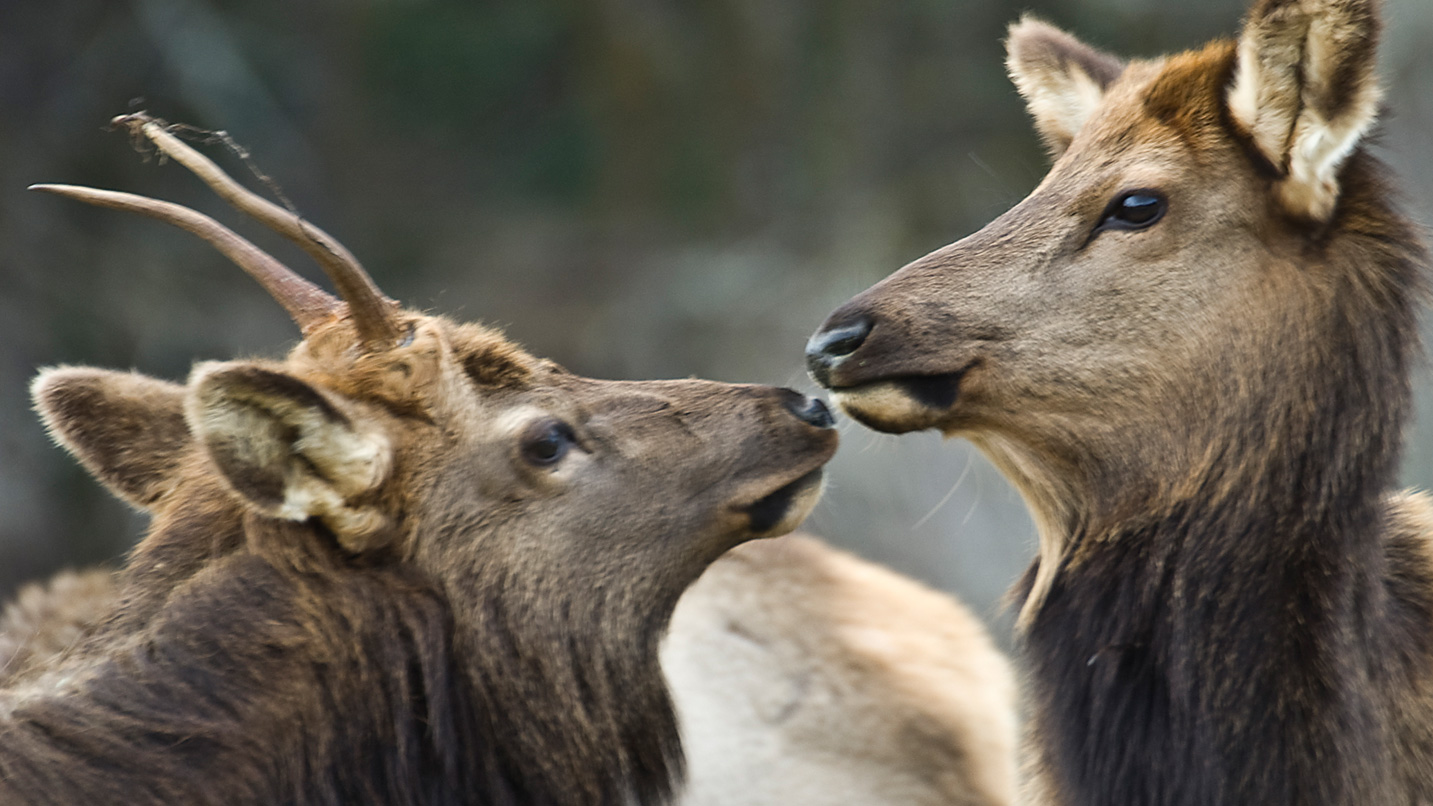
Observe Elk Herds in the Meadows
A majestic sight any time of the year, Oregon’s elk herds consume many pounds of vegetation daily. To keep these massive animals from munching on ranchers’ hay supply when they migrate down from higher elevations in Eastern Oregon each winter, the Oregon Department of Fish and Wildlife provides hay-feeding stations for Rocky Mountain elk from December to April throughout the Elkhorn Wildlife Area near Baker City. Visitors can often observe elk feeding at the Anthony Creek site along River Lane, 8.5 miles west of North Powder.
Roosevelt elk are a subspecies found west of the Cascades in the Coast Range, even occasionally spotted trotting down the beach in places like Cannon Beach. They get similar dining service December through February at the Jewell Meadows Wildlife Area about 36 miles inland from Seaside. Visit in the morning for the best viewing, or ride along in the hay wagon on a free elk-feeding tour. (Jewell begins taking reservations for the highly popular tours on Dec. 1; call 503-755-2264.)
Found throughout Oregon, many mule deer herds follow age-old migratory routes in late fall to reach grazing grounds free of deep snows. As those pathways become increasingly fragmented by roads and other development, humans have stepped into help. In Deschutes County south of Bend, fencing along Highway 97 guides deer and other mammals to “undercrossings” like one built between Lava Butte and Sunriver. Look for deer heading under the road during migration season — thousands of which cross each fall and spring. Oregonians can help fund wildlife crossings statewide by selecting the Watch for Wildlife specialty license plate.
If You Go:
- Give all wildlife plenty of space. A good rule of thumb: If an animal is altering its behavior because of you, you’re too close. Bring binoculars to enhance your viewing.
- Remember to be extra alert when driving in autumn, when animals are more likely to be on or near roads.
For more ideas on when and where to spot wildlife, visit ODFW’s Wildlife Viewing Map.
